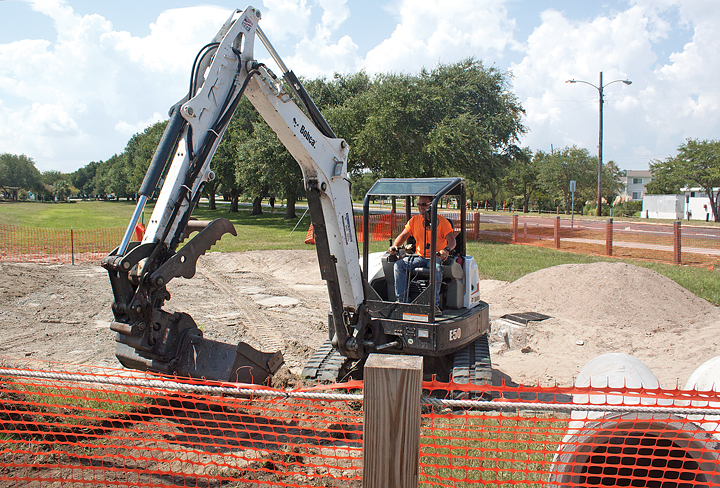The town of Wrightsville Beach, in conjunction with the University of North Carolina Wilmington, the City of Wilmington and the North Carolina Coastal Federation, is exploring a new method of lowering bacteria levels in coastal waters.
The coastal federation received a grant from the National Estuarine Research Reserve to install seven bio retention areas, or rain gardens, around Wrightsville Beach. The main purpose of the rain gardens is to absorb and filter rainwater to cut down on polluted runoff pouring into Banks Channel, Bradley Creek and Hewlett’s Creek.
Tracy Skrabal, coastal scientist and office manager for the coastal federation’s southeast regional office, said the rain gardens generally consist of native shrubbery planted in sandy soil. The plants absorb much of the rainwater and the sand filters pollutants from any overflow runoff.
Skrabal said UNCW’s Dr. Mike Mallen recorded bacteria volumes before installation as a baseline and he would test bacterial levels again in the spring of 2015 to determine the effectiveness of the gardens.
If the gardens produced a significant drop in bacteria levels, Skrabal said rain gardens could be incorporated into many future town developments. She said the current rain garden project was expensive only because it involved replacing existing drains and -rerouting runoff to the new gardens. Incorporating gardens into future building projects would actually be cost effective.
“If you do away with traditional stormwater ponds and things that take up a lot of space, there’s a lot of studies that show you can actually save money,” Skrabal said.
Wrightsville Beach’s stormwater manager, Jonathan Babin, said the seven filtration systems would be installed around Wrightsville Beach during September, finishing by the first week in October. The first system is already under construction on West Salisbury Street. Babin said a few of the gardens, such as the one being built on Iula Street, would be as simple as an underground sand chamber to filter the water.
Skrabal said once the gardens were installed, upkeep would be no different from maintaining any other landscaped area around Wrightsville Beach. If the project proved to cut down on bacteria in Hewlett’s Creek, Lees Cut, Kenan Creek and Banks Channel, the coastal federation could receive more grant money to continue the project.
Skrabal is in favor of more rain gardens and said she believed the town and its residents were supportive as well.
“It’s just a way of planning and working smarter,” she said. “Stormwater runoff is a problem everywhere you have development. This low-impact development and all of these techniques are finding their way worldwide because all of our waters are becoming impaired. It’s only going to get worse if we don’t start doing things a little differently.”
email [email protected]




